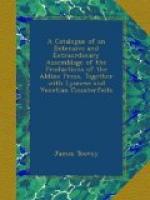Not less curious, as regards costume, are the Peruvian ladies. And, as they are equestriennes, we will describe their riding-habits in the words of the same traveler:
“To commence at the top. This riding dress consisted of a huge felt hat, both tall and broad, and generally ornamented with a plume of three great feathers sticking up in front. Next came an all-round sort of a cape, of no shape in particular, with a wide collar, several rows of fringe, much needle-work (and corresponding waste of time upon so hideous a garment), and of a length sufficient to reach below the waist, and so completely hide and spoil the wearer’s generally fine figure. Then came a short overskirt, extending a little below the knees, and beneath which appeared the fair senora or senorita’s most unfeminine pantaloons, which, being carefully tied above the ankle in a frill, were allowed to fully display that treasure of treasures, that most valued of charms, the beautiful little foot and ankle. In addition to this absurd dress, which conceals the graceful form of perhaps the handsomest race of women in the world, the fair creatures have a style of riding which, to Europeans accustomed to the side-saddle, certainly seems more peculiar than elegant; that is to say, they ride a la Duchesse de Berri—Anglice, like a man.
“The full dress, or evening costume, in the provinces, seemed simply an exaggeration upon that of the towns—the crinoline being more extensive, the petticoats shorter, and the dressing of the hair still more wonderful and elaborate.”
[Illustration: YOUNG MESTIZO WOMAN. MIDDLE-AGED LIMENA.]
Among the mestizos, half-castes, of white and Indian origin the women are often very beautiful, especially when the blood of the latter prevails. They are, we are told, the best-looking of all the Peruvian women, possessing brilliantly fair complexions, magnificent long black tresses, lithe and graceful figures of exquisite proportions, regular and classic features, and the most superb great black eyes.
“Though often glorious in youth, these dark-skinned, passionate daughters of the sunny Pacific shore soon begin to fade. Although their scant costume and the manto y saya—the dress favored at night—serve only to expose and display the charming contour of their youthful form, as the years roll on and rob them of these alluring attractions, the simple array becomes ugly and ridiculous. Often did we laugh at the absurd figure presented by some stout, middle-aged half-caste, or a good many more caste, lady, clad in her manto y saya. Especially ludicrous did these staid females appear when viewed from behind.”
The Peruvian negress, of elderly years, compares not unfavorably with her whiter Spanish sister of the same age. Both display inordinate vanity, which consorts ill with the brawny calves and large feet they cannot help showing on account of their short though voluminous skirts, and both have a womanly love of jewelry.




